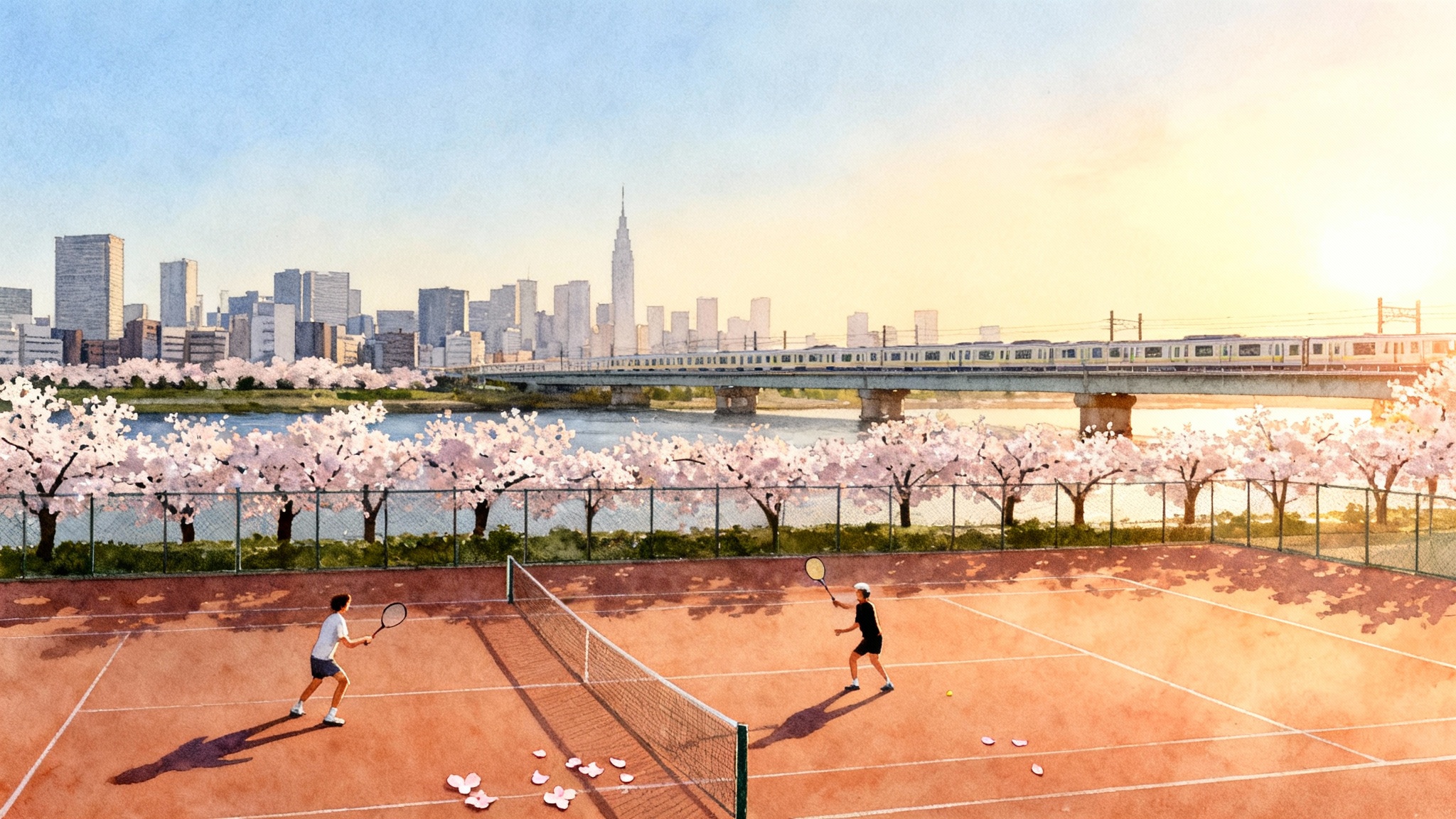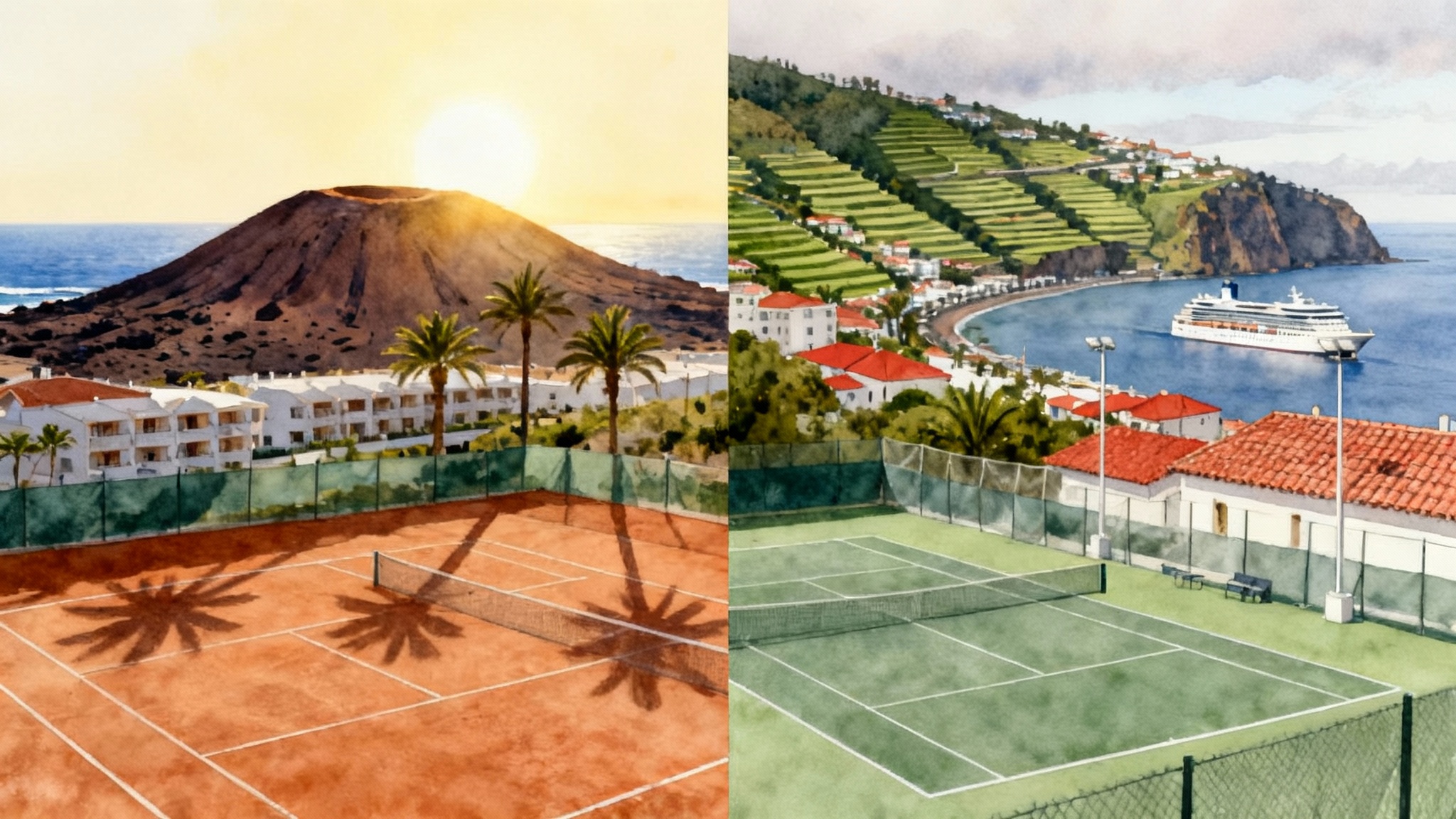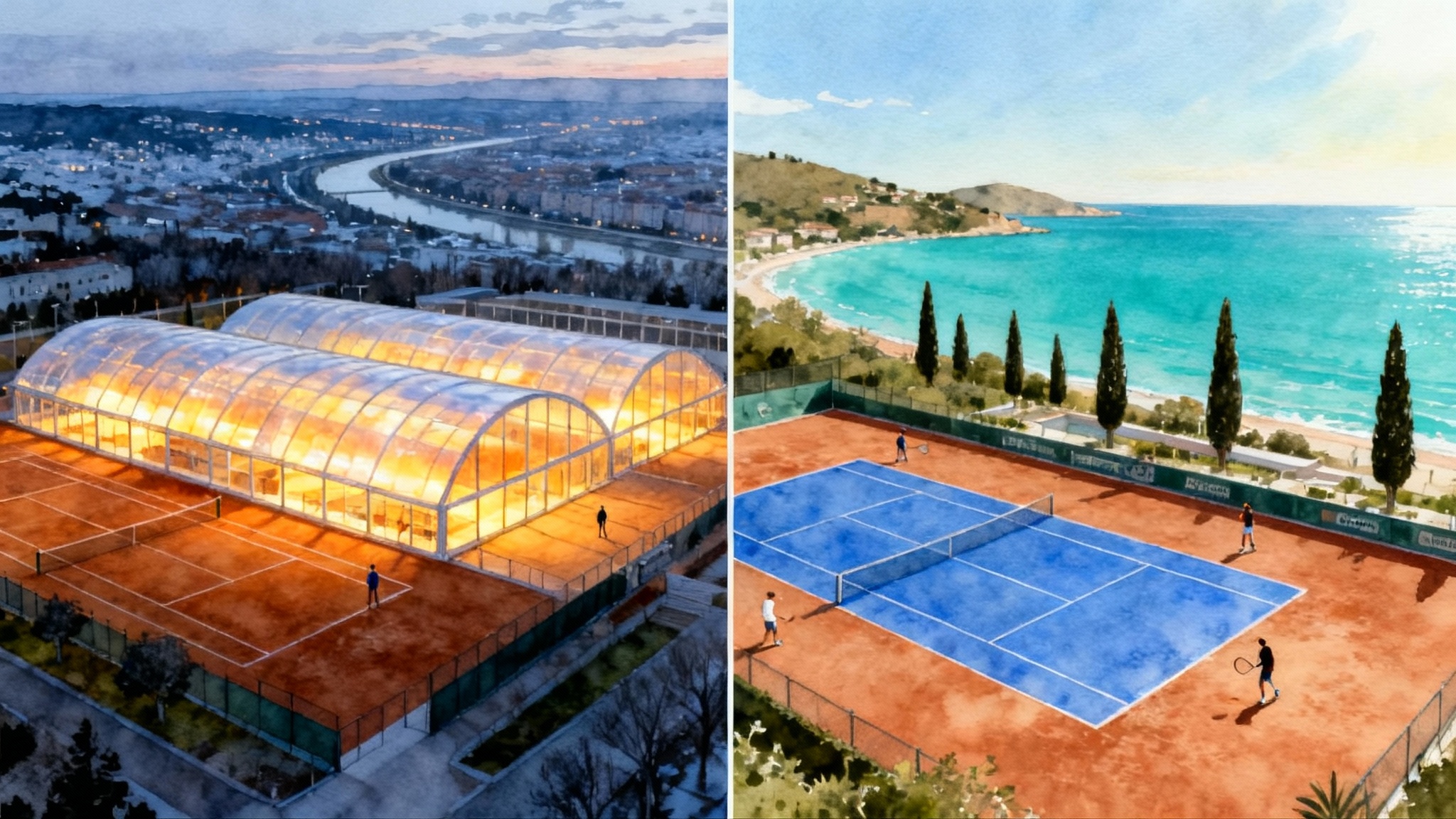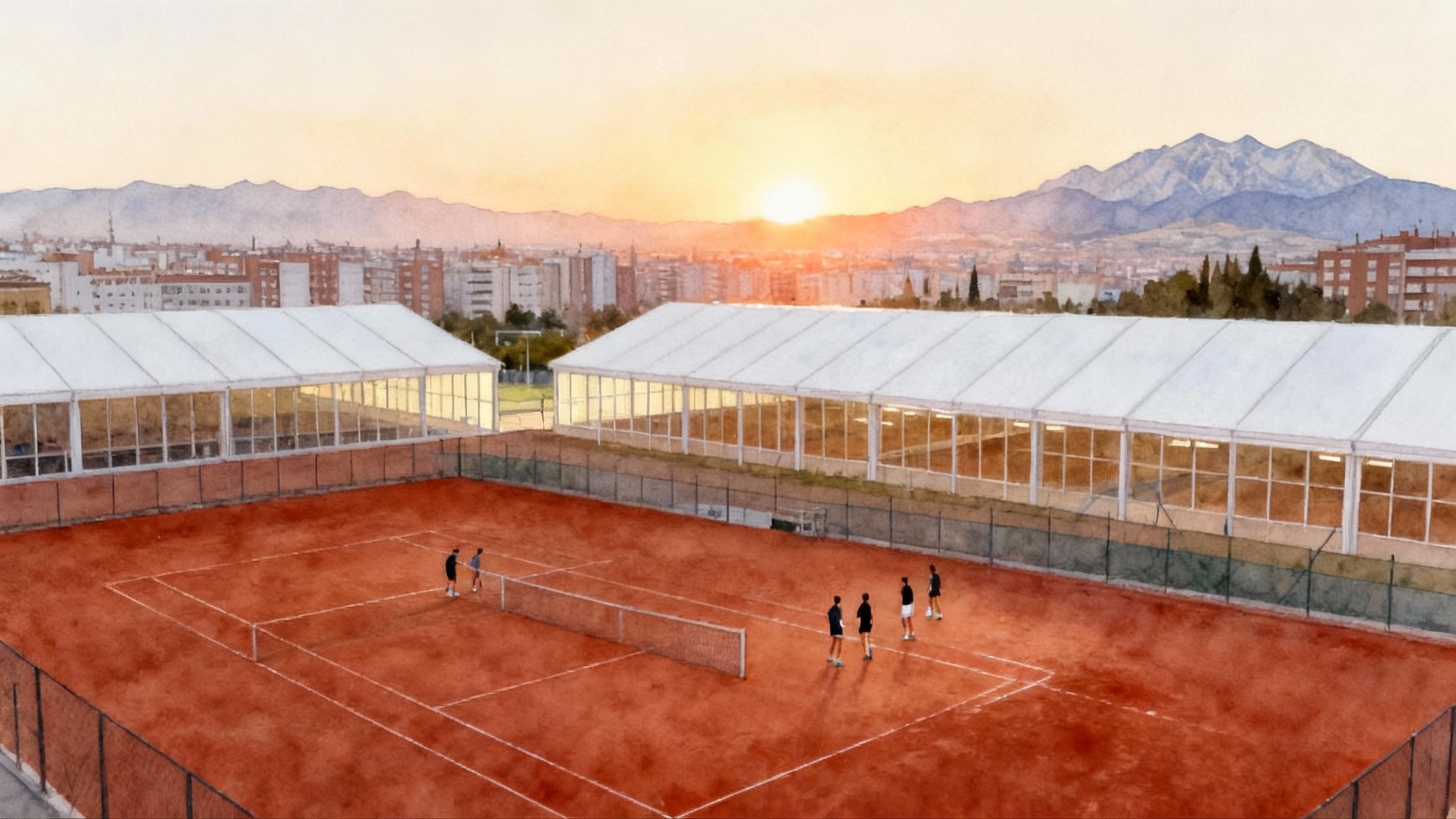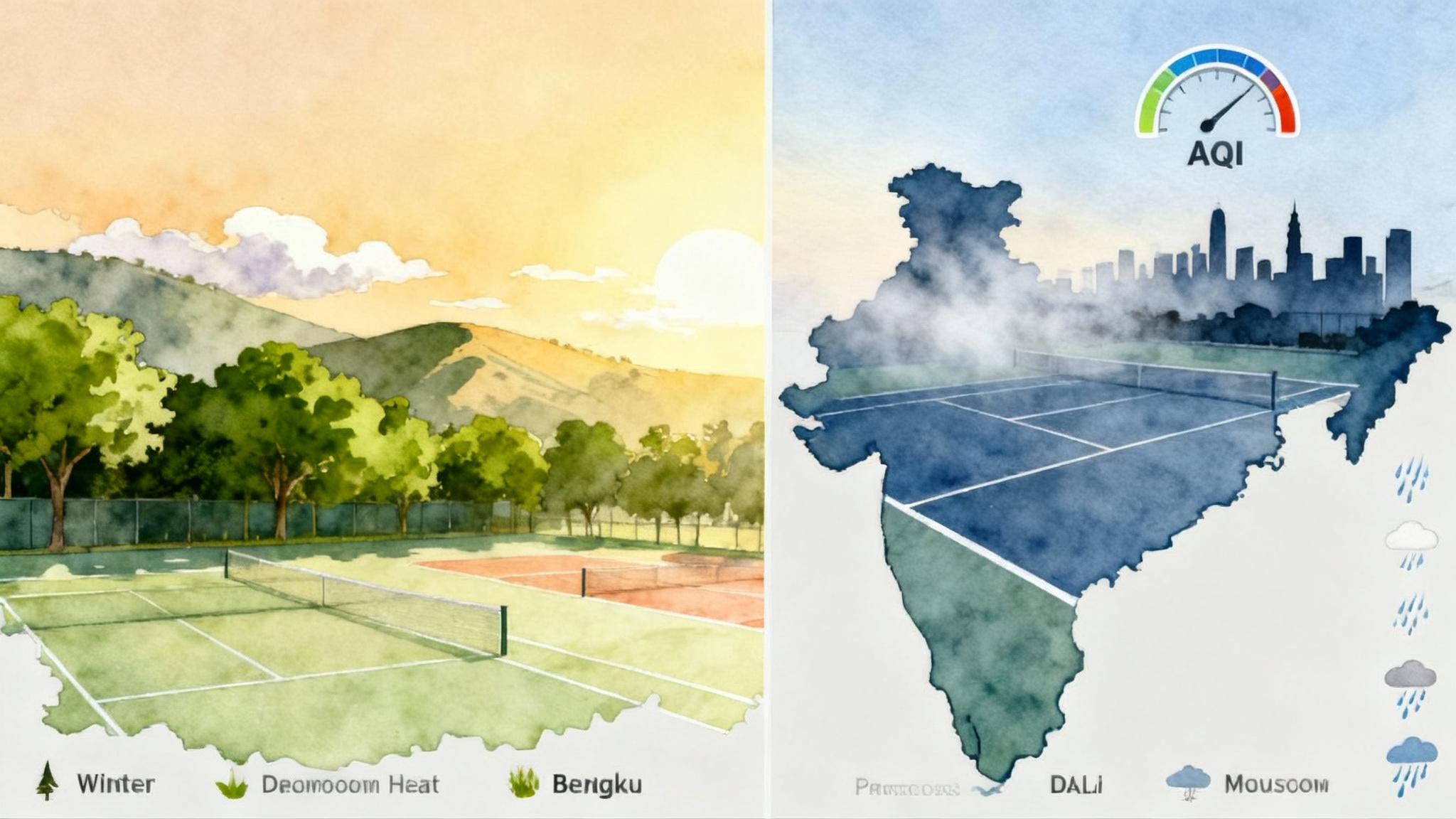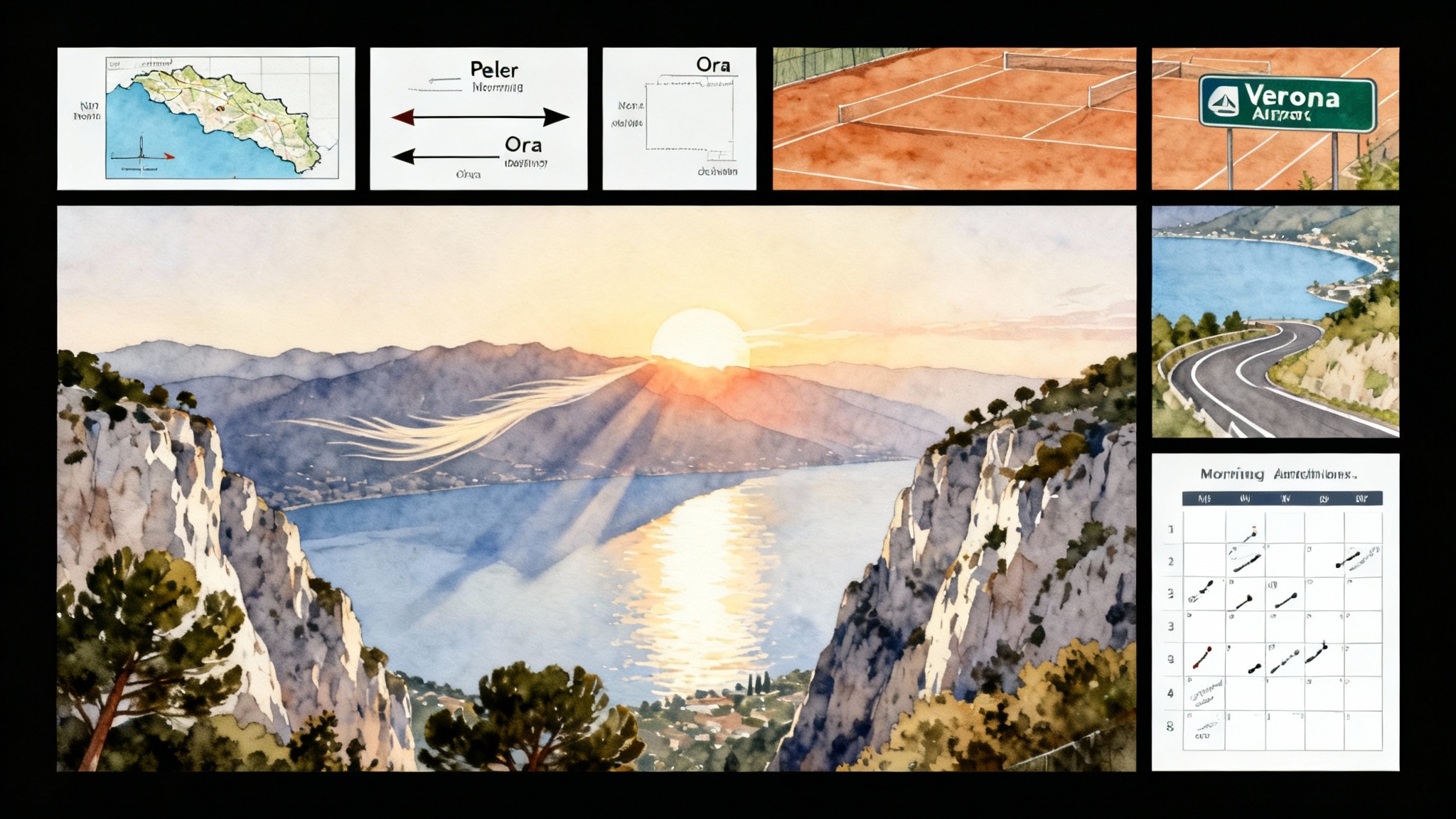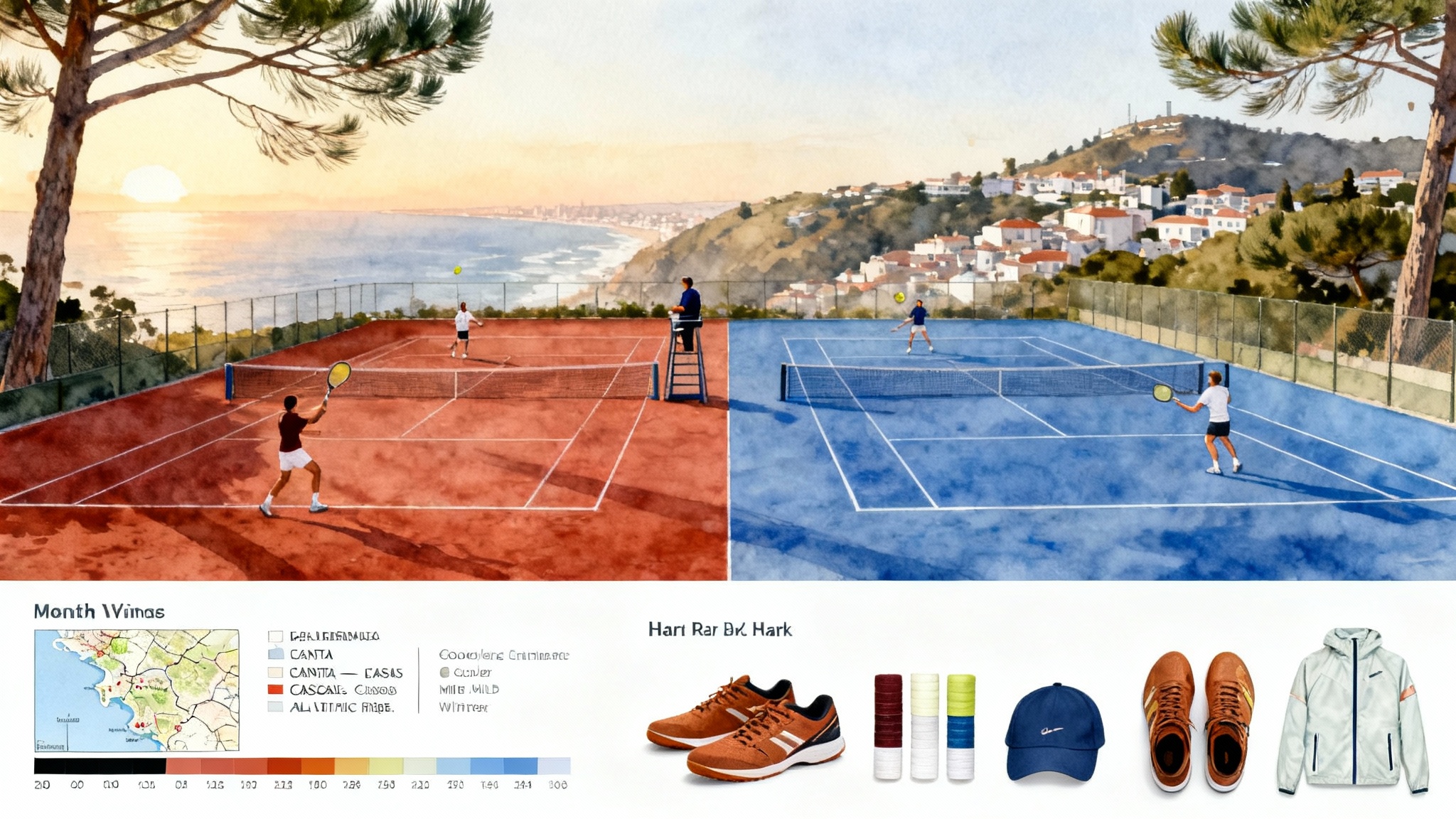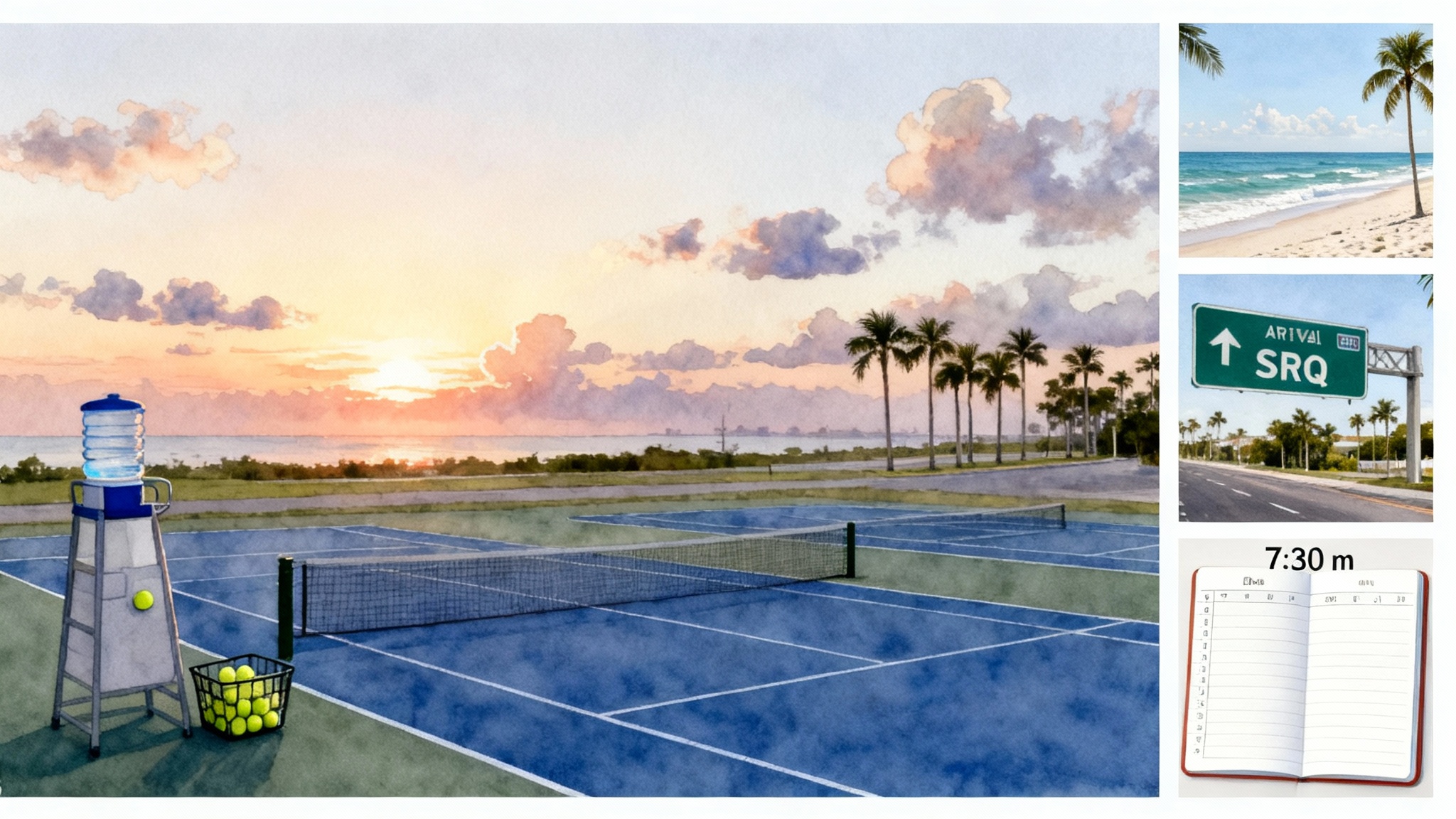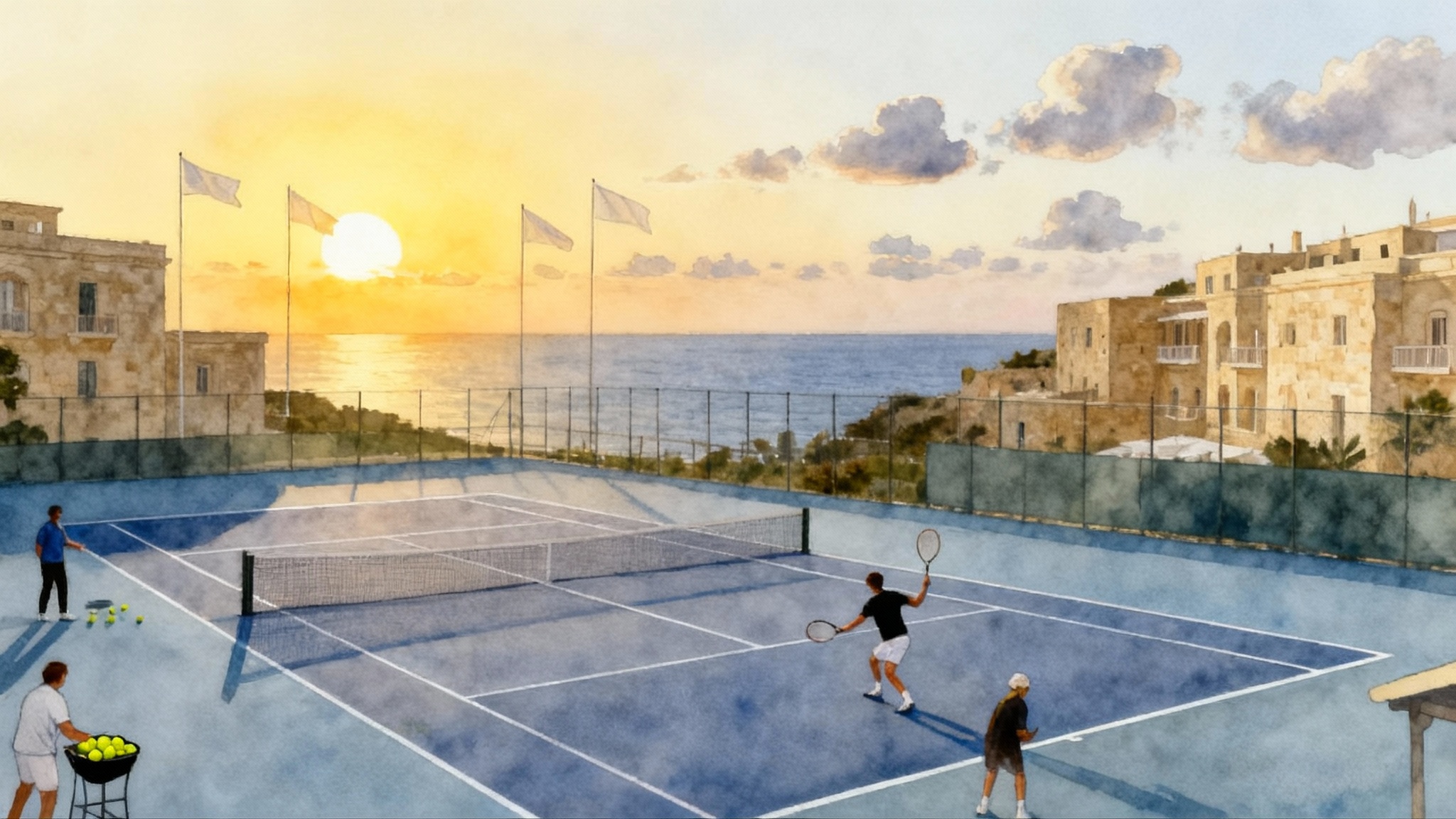Berlin Winter Tennis 2025–26: Domes, Daylight, and TennisTree
Berlin’s winter domes keep rallies alive from November to March. Use daylight and temperatures to plan smarter sessions, book the right hours, control costs, and follow a sample week anchored at TennisTree in Steglitz.
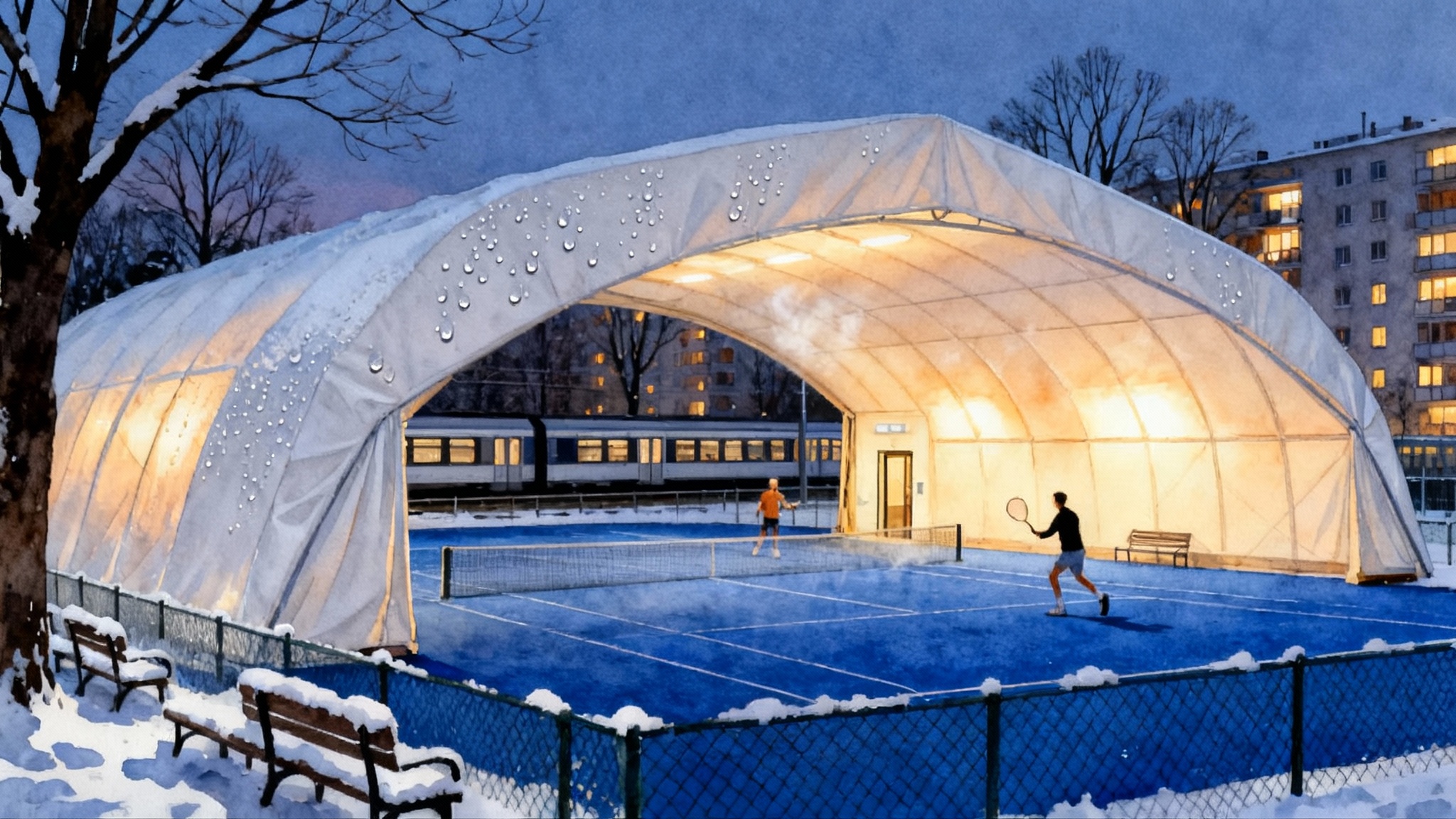
Why Berlin works as a winter tennis base
Berlin is not the warmest city in Europe, but it is one of the most reliable cities for winter tennis. Reliability is the hidden currency of skill development. If you can predict when you will play, you can stack sessions, manage recovery, and build a season that compounds. Berlin’s indoor domes and carpet halls deliver that predictability from early November through late March, which is exactly when most outdoor courts are cold, wet, or iced over.
Think of the city as a training campus rather than a sightseeing stop. You will not be chasing sunshine. You will be chasing repeatable slots, short commutes, and a training rhythm that is boring in the best way. If you ever want a warmer comparison for part of your season, look at a mild-climate base in Sintra–Cascais or the Tenerife vs Madeira winter bases.
The bubble season in plain terms
Local clubs cover courts in inflatable structures called Traglufthallen. Installations usually start in late October and early November, then come down around late March or early April when clay courts reopen. This four to five month window is the backbone of the Berlin tennis calendar. For most players, it is the difference between sporadic winter hits and a playable plan.
What to expect inside a dome:
- Surfaces: mostly carpet with a thin rubber granulate, plus some hard courts and a few covered clay courts. Carpet plays quicker and lower, so plan for compact swings and early contact.
- Climate: heated but not tropical. You will warm up in layers and shed to a base layer after 10 to 15 minutes. Bring a dry top for the changeover between sets.
- Acoustics: domes amplify sound. Call lines clearly and use simple signals with your partner or coach.
Daylight, temperature, and why timing matters
Berlin’s daylight shrinks dramatically around the winter solstice. In late December, sunrise sits near 8:15 and sunset near 15:55. Check exact times for your dates with this reference for Berlin winter sunrise and sunset. Short days change behavior in two ways.
- Commute safety and energy: morning commutes are dark until roughly 8:00 in December and early January. If you rely on cycling or walking, aim for midmorning starts to keep the ride safer and the warm-up less rushed.
- Circadian rhythm: many players feel flat at 7:00 in the dark and sharper by late morning. If your schedule allows, book late morning or early afternoon to trade a small price premium for better quality reps.
Temperatures tell the rest of the story. Typical highs hover around 3 to 5 degrees Celsius from December to February, with lows around minus 1 to minus 3. Inside domes you still feel the outside baseline. Cold air tightens strings, slows the ball slightly, and changes how your body warms. Practical adjustments that pay off:
- Drop string tension by 1 to 2 kilograms to regain dwell time and launch on colder days.
- Start with a short-ball ladder: mini tennis, crosscourt box, then full court. Ten minutes of progressive distance replaces twenty minutes of aimless rallying.
- Use two dry grips per session. Cold air plus warm hands equals slippery handle after 45 minutes.
Booking the right hours without blowing the budget
Indoor courts are a scarce resource between November and March. You win by booking strategically, not only by hunting for a single cheap slot.
- Peak vs off-peak: weekday slots before 16:00 are typically cheaper and easier to get. After-work windows from 17:00 to 21:00 sell out first. If you can shift work by an hour or two, your cost and availability both improve.
- Plan in blocks: book three to four weeks of the same time. Repetition builds rhythm, and clubs look kindly on players who commit. If you are traveling, block the exact dates you are in town before you book flights.
- Pair up smartly: singles rallies are great, but a two-on-one drill with a coach or advanced hitter doubles your touches and keeps your heart rate under threshold. For the same money, you get more quality contacts.
- Mix durations: 60 minutes for technique, 90 minutes for match play. The 90-minute slot is usually the sweet spot for warm-up, two sets to four, and a cool-down.
- Read cancellation windows: many facilities allow free cancellations up to 24 to 48 hours in advance. If your week is unpredictable, stack two cancellable reservations, then drop the one that conflicts.
Typical prices you can expect in winter:
- Off-peak carpet: roughly 18 to 30 euros per hour.
- Peak carpet: roughly 28 to 45 euros per hour.
- Covered clay or premium venues: add 5 to 10 euros per hour.
These are ranges, not promises. Call or check the club portal before you build your calendar. The ranges help you budget a month: four off-peak technique hours and four peak match hours will often land between 200 and 300 euros, balls included.
A Steglitz base: TennisTree and the south-side circuit
Steglitz sits in southwest Berlin with quick links to Dahlem, Lichterfelde, Zehlendorf, and Tempelhof. It is a practical base if you want fewer transfers and more touches. TennisTree small-group sessions here are built for winter. Groups cap at four players, drills are short and specific, and sessions layer from footwork to patterns to live points. The aim is to keep you moving and to keep vagueness out of your training hours.
Nearby you will find a patchwork of club domes and municipal halls. Surfaces are mostly carpet. That helps consistency, because your timing and patterns transfer from one court to another without a shock to the system. For weekend match play, call ahead and ask about guest booking, day membership, or league drop-in nights. Winter league schedules are busy, but there are always open gaps on Saturday afternoons and Sunday evenings.
The sample week: one plan you can copy
This template is built for someone who wants five to six high-quality on-court hours, two off-court strength hours, and one open slot for a second match or recovery. Adjust the times to your commute and your energy profile.
Monday
- 10:00 to 11:00: TennisTree small-group technique. Theme: forehand height control on carpet. Cue: head still, soft wrist, finish to shoulder.
- 17:30 to 18:15: Gym. Hinge day and trunk rotation. Three sets each of Romanian deadlifts, split squats, cable rotations, and side planks.
Tuesday
- 12:00 to 13:30: Partner drills, two-on-one. Pattern work: crosscourt neutral ball 10 shots, then change direction to the open lane. Finish with 20 minutes of serve plus one patterns.
- Evening: Mobility. Ten minutes of hips and thoracic spine. Hydrate and prep strings for Wednesday.
Wednesday
- 10:00 to 11:00: TennisTree small-group serve day. Theme: second-serve confidence and body serve. Goal: hit 20 consecutive kick serves to the backhand box at 70 percent pace.
- 19:00 to 20:30: Optional match play if energy is high. If you played late, swap Thursday’s court for recovery.
Thursday
- 13:00 to 14:00: Solo basket. Forty serves with targets, then 15 minutes of approach volleys. Record five minutes of serve from the side for quick feedback.
- 18:00 to 18:45: Gym. Lunge day and scapular control. Three sets each of reverse lunges, rear foot elevated split squats, band pull-aparts, and farmer carries.
Friday
- 11:00 to 12:30: TennisTree group patterns to live points. Theme: backhand crosscourt build, forehand inside-in finish. Format: 30 minutes of fed drills, 30 minutes of cooperative patterns, 30 minutes of point play starting with a deep crosscourt feed.
Saturday
- 14:00 to 15:30: Club match play. Two sets to four with a 7-point tiebreak at 3–3. If courts are tight, book 60 minutes and play short sets with no-ad points to keep the pace.
Sunday
- Open slot. Either a second match, a long walk, or structured recovery. If you play, keep it at 60 minutes and stop when quality drops.
Why this works:
- The week front-loads technique in bright hours, then layers pressure slowly.
- Match slots land when your body is warmest and alertness is highest.
- Strength is split for legs and trunk so you never go into a match sore in the wrong places.
Gear that prevents headaches
- Shoes: carpet favors a smoother outsole. If you only own herringbone clay shoes, they work, but watch for too much bite on quick stops.
- Layers: base layer, light midlayer, and a breathable top you can remove. Bring a dry tee to change into between sets.
- Grips and rosin: two replacement grips and a small rosin bag help when hands get slick.
- Balls: in the cold, pressure drops and felt fluffs. Use a fresh can for match play and keep a second can sealed for the second set.
- Strings: if you use a stiff polyester at 23 kilograms in summer, test 21 to 22 kilograms in winter or hybrid with a softer cross to add dwell time.
- Bag extras: small towel, warm hat for walk-in and walk-out, and a compact pump gauge if you drive and store balls in the car.
Using daylight to design your week
Short days do not have to shrink your court time. They just force choices.
- Morning commuter: if you take transit and prefer less crowded trains, book at 9:30 or 10:00. You will miss the crush, start in daylight by December’s end, and still have time to work after lunch.
- Remote worker: stack two midday sessions on Monday and Thursday when courts are cheaper, then use an evening match on Saturday when prices matter less.
- Parent schedule: choose one early slot before school, one lunchtime slot, and one weekend match. Keep each to 60 minutes, make your warm-up the first 10 minutes of the hour, and cut chatter.
How to actually get courts
- Call first, portal second: portals show availability, but the desk often knows about soft holds or partner cancellations. A polite call can unlock a slot you will not see online.
- Ask about standing reservations: many clubs hold midweek blocks for regulars. If you commit to four consecutive Wednesdays, you may be added to a list that renews automatically.
- Share the reservation: two players pay the court, two players pick up balls and grips, then rotate roles weekly. This makes the bill predictable and keeps everyone invested.
- Respect the clock: winter schedules are tight. Walk on at the exact minute, play with a visible timer, and clear the court quickly so you stay in good standing with staff.
A climate-first mindset for training quality
Cold and darkness can feel like an excuse. Treat them as design constraints.
- Warm-up is non-negotiable: five minutes of jump rope or light jogging, then joint circles from ankles to shoulders, then mini tennis. Warmups that start slow keep ankles and calves happy on carpet.
- Drills before games: in winter, the first twenty balls decide your session quality. Place a cone at the sideline and groove 50 crosscourts through that gate before you play any live points.
- Use heart rate, not feel: cold tricks perception. Wear a simple monitor and track average heart rate by session type. If technique days climb above 80 percent of max, you are sliding into junk reps.
Steglitz logistics and smart commuting
- South by design: from Steglitz, you can reach domes in Dahlem, Lichterfelde, and Zehlendorf with one quick bus or S-Bahn ride. Choose accommodation along these lines and you cut transfers.
- Pack small: winter layers bulk up your bag. Keep a capsule kit in a drawstring sack inside your backpack and reload it every two sessions.
- Eat for the cold: bring a thermos with tea or broth, a banana, and a small handful of salted nuts. Warm fluids beat sugary sports drinks on a cold morning.
What to do when courts are frozen or your partner cancels
- Book a ball machine hour: one hour alone on a machine equals two hours of unfocused rallying. Program crosscourt at medium pace and tempo your footwork to the beep.
- Video ten minutes: a phone on a small tripod from the side tells you more than a thousand internal cues. Look for spacing, contact height, and head stillness.
- Switch to pattern rehearsal: shadow swing sequences in an empty hallway or quiet corner of the gym. Ten minutes of crosscourt to inside-in, then inside-out plus volley, locks patterns into your nervous system.
Budgeting the whole season
A four-month plan helps you spend once and then focus on training. Use this simple template for November through March.
- Core sessions: eight TennisTree group hours per month. Budget 160 to 240 euros depending on package.
- Match play: six to eight club hours per month. Budget 180 to 320 euros depending on peak time.
- Strength: two short gym sessions per week. Budget 30 to 60 euros per month if you use a basic facility or a home setup.
- Reserve fund: 40 euros per month for extra balls, grips, or a last-minute sub.
Total: roughly 410 to 620 euros per month for a steady winter program that truly moves the needle. Compare that to two unplanned hits per week and you will find that predictability beats randomness even on cost.
Etiquette and small details that matter
- Shoes off mats: most domes have a clean threshold for carpet. Change shoes after the mat. Staff will notice and you will be the player who gets a favor when you need it.
- Keep the dome zipped: do not linger in the entry tunnel. Close it behind you and keep the warmth inside for everyone.
- Quick intros: say hello to the pair on the next court and swap first names. Berlin tennis is a small world in winter. You will cross paths again.
The payoff
If winter is when most players hibernate, winter is also the best time to build a lead. Berlin’s domes give you the structure. Daylight data tells you when you will feel strongest. A simple booking plan keeps your costs in line. Anchor the week with TennisTree’s small-group sessions in Steglitz, add one or two club matches on the weekend, and the season from November to March starts to look less like survival and more like progress that stacks until spring.
When April arrives and the domes come down, you will not be rusty. You will be ready, with cleaner footwork from the carpet, crisper patterns from focused drills, and a body that has absorbed steady work rather than a handful of heroic hits. That is the quiet advantage of a well designed winter. It is not flashy, but it is powerful, and it travels with you into every rally you play next season.
